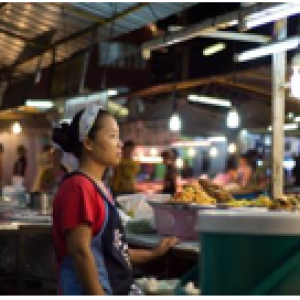
China’s agricultural system, environment and food supply is under great pressure from an increasing population, an intensive use of agro-chemicals and extensive food safety problems.
The Chinese government is responding to such stressors by developing increasingly stringent food quality standards, while Chinese consumers try to reduce the distance between themselves and the food production system. This paper outlines how China has developed a progressively complex system of food quality standards, the institutions that perform these standards and their impacts on China's smallholder production system. However, the standardization system has not been communicated clearly to consumers, or increased trust in the food system. Scott and her colleagues analyze both approaches to the problem and reveal their contradictions and gaps, while comparing the alternative agricultural transformation with those in the West.
Abstract
Considering certified organic production as ‘zero’ (including the absence of genetically modified seeds and feed, and synthetic pesticides and fertilizers as inputs), we outline how, since the 1990s, China has developed a unique system of progressively stringent food quality production standards—‘hazard-free’, ‘green food’, and organic—on its purported path to zero ecological impact and zero food safety risk. We describe the structures and institutions that perform these standards and their inclusion in, and impacts on, China’s agricultural sector, which is characterized by a polarization between widespread smallholder production and emerging consolidated entrepreneurial farm enterprises branded as ecological. Based on 95 key informant interviews conducted between 2010 and 2012, we discuss the contradictions within state- and civil society-led paths to zero. We argue that the government’s commitment to ecological agriculture is superficial. Due in part to the context of a state-driven yet market-oriented economy with limited civil society involvement, the system of extensive standards has not been clearly communicated to Chinese consumers. Nor has it garnered public trust in the food system, as evidenced by a rapidly expanding ‘alternative’ food sector, including community supported agriculture (CSA) ventures and home delivery schemes, many of which are based on producers and consumers negotiating trust rather than relying on the quality assurance of certification. But consumers are motivated by seeking zero food safety risk, and show limited concern about environmental protection or farmer livelihoods. Some exceptions are patrons of values-oriented CSAs, farmers’ markets, and buying clubs, which point to interesting trajectories for the future of China’s food system.
Citation
Scott, S., Si, Z., Schumilas, T., Chen, A., Contradictions in state- and civil society-driven developments in China’s ecological agriculture sector, Food Policy, Volume 45, April 2014, Pages 158-166, ISSN 0306-9192, http://dx.doi.org/10.1016/j.foodpol.2013.08.002.
Read the full study here.
We also want to highlight the latest major FCRN report, Appetite for Change, which examines changes in China's food system, the emerging health, environmental and supply chain trends, and the challenges and opportunities they pose. You find it in the FCRN publications section here.
Finally, on the China theme, you may be interested in this article entitled Global Food Security: Debunking The ‘China Threat’ Narrative – Analysis, here.







Post a new comment »